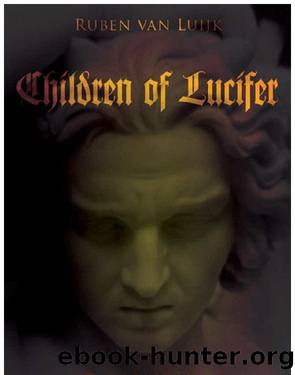Children of Lucifer; The Origins of Modern Religious Satanism by Ruben van Luijk

Author:Ruben van Luijk [Luijk, Ruben van]
Language: eng
Format: epub
Published: 0101-01-01T00:00:00+00:00
PRECURSORS AND INSPIRATIONS
LaVey presented his Church of Satan as âthe first above ground organisation of Satanism.â27 He probably did so in good faith. Yet his Satanic church was not the first religious group venerating Satan in the twentieth century, not even the first above-ground one. Even if we pass over rumors and newspaper reports that lack further corroboration, there are a few well-documented cases of Satanist organizations that antedate or are contemporary with LaVeyâs.28 Principal among these is the âTemple de Satanâ that had sprung into being in the permissive atmosphere of Interbellum Paris. Founded in 1930 by Maria de Naglowska, a Russian noblewoman who had fallen on hard times after her morganatic marriage to a Jewish violin player, it featured colorful sex rites, a touch of millennialism, and strident feminism. The âOrder of the Knights of the Golden Arrow,â as it was officially called, unabashedly operated in the open.29 Its founder held regular audience in La Coupole and gave weekly conferences in Studio Raspail, rue Vavin 36, while the movement issued a periodical entitled La Fleche: Organe dAction Magique (âThe Arrow: Bulletin for Magical Actionâ).
In its curious assembly of doctrines, Naglowskaâs Temple of Satan was a clear heir to nineteenth-century esotericism. Not at all anti-Christian in its outlook, the Order of the Golden Arrow professed to propagate the reign of the âThird Term of the Trinity,â the Holy Spirit. For Naglowska, however, âHoly Spiritâ was synonymous with âWoman.â She also liked to refer to the âEsprit Saintâ as âEsprit Sainââthe Wholesome Spirit instead of the Holy Spiritâpointing to the more benevolent attitude toward the human body that the new era would bring.30 The idea that the coming Age of the Holy Ghost was to be a feminine era had already been propagated by esotericists like Flora Tristan, Eliphas Levi, and Jules Bois, and before them by several medieval mystics. Women, Naglowska held, sought to âorganizeâ life instead of trying to dominate it, as the male impulse was; only the end of male domination and the establishment of matriarchy would bring harmony to the world. The Third Term of the Trinity would establish the âright to be differentâ for women, so they would be able to concentrate on those functions that they alone were capable of fulfilling.31
Naglowska spoke of herself as âPriestess of Satanâ and did not hesitate to describe the first stage of her ritual system as a âsatanic initiationâ that gave access to the âTruth of the Wholesome Satanic Doctrine.â32 In this sense, her order was undoubtedly Satanist. But Satanism was only one component of her religious system, which could probably best be described as an intricate semi-Hegelian compound of Christian, occultist, and Satanist elements. God, Naglowska held, was Life, and Life, God, ever changing, ever becoming, never static.33 Against this eternal âYesâ of God, Satan positioned itself. Not to be understood as something âliving outside of us,â he represented the co-eternal âNo,â which stood for destruction and, by application, human reasonâthe Goethean spirit âder stets verneintâ and that unceasingly tries to deconstruct creation.
Download
This site does not store any files on its server. We only index and link to content provided by other sites. Please contact the content providers to delete copyright contents if any and email us, we'll remove relevant links or contents immediately.
Fearfully and Wonderfully Made by Philip Yancey & Paul Brand(588)
Christian Ethics by Wilkens Steve;(571)
Numbers by Ronald B. Allen(503)
The World from 1450 To 1700 by Wills John E.;(500)
Christian Ethics: An Introduction to Biblical Moral Reasoning by Wayne Grudem(478)
How to Read Slowly by James W. Sire(458)
God and the Multiverse by Victor J. Stenger(449)
Morality by Jonathan Sacks(432)
Monastic Archaeology by Unknown(408)
The Disabled Church by Rebecca F. Spurrier;(396)
Jesus: A New Vision by Whitley Strieber(371)
Critical Writings by Joyce James;(368)
Death of the Doctor by Unknown(366)
Amish Grace by Donald B. Kraybill & Nolt Steven M. & Weaver-Zercher David L(365)
Redeeming Sociology by Vern S. Poythress(364)
The Technological System by Jacques Ellul(352)
Children of Lucifer; The Origins of Modern Religious Satanism by Ruben van Luijk(352)
The Catholic Case for Trump by Austin Ruse(334)
The Church in the Early Middle Ages by G.R. Evans(332)
